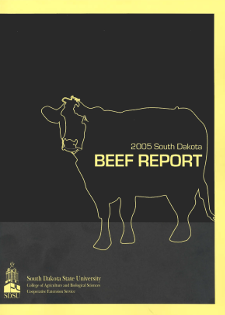Document Type
Report
Report Number
2005-20
Publication Date
2005
Keywords
leafy spurge, grazing, mowing, herbicide, control methods
Summary
Leafy spurge (euphorbia esula L.) is an herbaceous perennial which is deep rooted and can reproduce by seeds and rhizomes. First introduced into North America in the 1800’s from Europe, it now covers 25 states in the USA and several provinces in Canada. It is a major concern in North Dakota, South Dakota, Wyoming, Montana, and Nebraska. Leafy spurge is considered a noxious weed that is extremely competitive, establishing itself in pastureland and roadsides. Bangsund et al. (1997) estimated that by 2005, uncontrolled leafy spurge acres would reach 18.5 million in the Northern Great Plains. The cost of leafy spurge is estimated to be in the 100’s of millions of dollars due to lost grazing through a reduction of available AUM’s (animal unit months) and treatment costs which may not be economically feasible. This is impart due to the fact that cattle avoid eating leafy spurge because of post-ingestive negative feedbacks from plant toxins (Kronberg et al., 1993) and avoid grazing in areas where leafy spurge canopy cover is high, thus reducing grass production and utilization (Hein and Miller, 1992). Do to the high costs of herbicides and their ineffective control in the long-term (Lym and Messersmith, 1985), biological controls such as sheep and goats as well as the flea beetle have become more popular tools in controlling leafy spurge (Bangsund et al., 2000). In a pasture setting sheep and goats readily graze forbs and do not experience the build up of toxins that cattle do, making small ruminants ideal biological controls for leafy spurge. The object of this trial was to measure the effectiveness of various control methods on leafy spurge.
Number of Pages
3
Format
application/pdf
Language
en
Publisher
South Dakota State University
Rights
Copyright © 2005 South Dakota State University
Recommended Citation
Bruns, Kelly W. and Smart, Alexander J., "Effect of Grazing, Mowing, or Herbicide on Leafy Spurge Control" (2005). South Dakota Beef Report, 2005. 21.
https://openprairie.sdstate.edu/sd_beefreport_2005/21


